PrestaShop WhatsApp Business Order Notifications: Notify or alert your customers of time-sensitive information, such...
How do you handle print on demand returns in 2024?
How do you handle print on demand returns in 2024?
Since you generate sales through your print-on-demand business, you will likely be notified of a customer problem. As a result, they may want to return their order.
This can be scary, as your goal should always be to keep your customers happy!
Print on demand suppliers typically don't offer much support for sending returns directly to them; You will then have to deal with it yourself.
That's why we'll look at why returns happen and how to solve them.
How to handle print on demand store returns in 6 ways
Returns are a hassle for any e-commerce business, especially for POD stores, bearing in mind that one of the advantages is the lack of stock.
Have you encountered return issues and need to know how to handle them professionally? Read on!
Here are the six ways to handle returns in your print on demand shop in 2023:
1. Determine what your customer wants
2. Ask for proof of error
3. Offer a replacement product
4. Provide a refund
5. Take care of the issue
6. Talk to your supplier
Let's start with the first method To handle returns; Determine what your customer wants.
1. Determine what your customer wants
You have to be a detective who understands the case to know the best way to solve the problem. You may also find the source of the problem that is causing you to receive additional return requests!
Reasons one through three, as mentioned earlier, are understandable reasons to get a refund and, based on evidence of results, will win you more customers in the long run.
Reasons four and five may be beyond your control and are often frustrating. You may want to talk to the client to reconsider, but offering consideration at the end is still workable.
What's the first thing you should do when you hear a complaint about a customer's order? Ask for proof of error first.
2. Request proof of error
The purpose of error proofing is to ensure that the customer is honest about their experience. People may write a story to get a free product, so ask for proof right away.
What kind of proof? A photo or video of the damage or misprint on the product will appear.
Suppliers also need photo or video evidence of offering a refund so you can use what the customer gives you if necessary.
3. Offer an alternative product
The first and most important quote that customers want to hear about a return policy is where you will replace the product with another product if there is an error.
As mentioned before, if the supplier makes a mistake, there is a good chance that they will send another product to your customer for free.
If the issue is shipping, you will still have to pay for printing and shipping the product. It's frustrating, and you often have to accept that there may be a net loss from some sales.
Replacing the product is also cheaper than getting a refund, even if the supplier doesn't cover the cost. You will benefit greatly from this choice!
4. Provide a refund
Sometimes, a customer doesn't want the product after purchasing it - they want their money back.
How long you allow the return to occur is up to you. The average time for e-commerce returns policies is around 15 to 30 days, and studies have shown that customers expect it to be around that time frame.
Your store usually has a way to easily refund your money.
Where should a customer send a printed copy upon request?
The best place to tell a customer to send a product is to the address that suits you best.
This can be your home address or a PO Box address, depending on how much you value your privacy.
What should you do with the returned product?
At first, a returned product may seem like a burden, but it has many uses!
Take pictures of it and use them in a giveaway contest to get more views for your store. Maybe there's a chance someone will buy it from your store, and you can send it to them.
There are so many creative ways you can use the product! You don't have to put it in the corner, hoping that it will be purchased in the future.
5. Take an honest interest in the issue
Taking care of the issue now may seem like a no-brainer, but many store owners don't know how to present it the way the customer wants.
Acknowledging their problem and empathizing with their frustration or fear can help them feel more comfortable.
When a customer is not in a good frame of mind, soothing him with a gentle and cheerful tone can do wonders for his satisfaction.
And if you have a customer service team helping you with this, make sure they are well trained on how to deal with customers!
6. Talk to your supplier
When in doubt about an order, it's always best to talk to your supplier!
Since you are a customer, they will willingly go to make sure you are happy.
Although there may be times when there is nothing they can do for you, it is always worth asking anyway.
Why is handling returns correctly so important?
The biggest reason why you should have a strong returns system is that about 83% of customers will not shop at a particular retailer after experiencing a poor returns process.
Considering that many expect a return policy, you are hurting your chances of getting future sales by not having a return policy.
Returns encourage loyalty
To build a brand, you need repeat customers. To achieve this, you need their loyalty.
Loyalty is tremendous. You can spend less on marketing because existing customers already enjoy your designs and want to share them with everyone they know!
Returns help to deal with competition
As you know, trying to convince your competitor's customers to become your customers is difficult, but one way to differentiate yourself is through your returns policy.
As mentioned before, statistics show that the majority of e-commerce customers want a good return experience to shop there again. This means that there are a lot of stores that don't do this or do it poorly;
This is your competitive advantage in ensuring that every revenue represents a positive customer experience.
Now, we know why you're missing out on a huge opportunity by not having a good returns strategy, but why would people want to return your products in the first place? Let's find out!
The five most common reasons for return requests
One of the main reasons you want a return policy is so you can protect your time and energy at work. It also makes sure that every experience with your store is a positive one!
Also, not every product type has the same return rate:
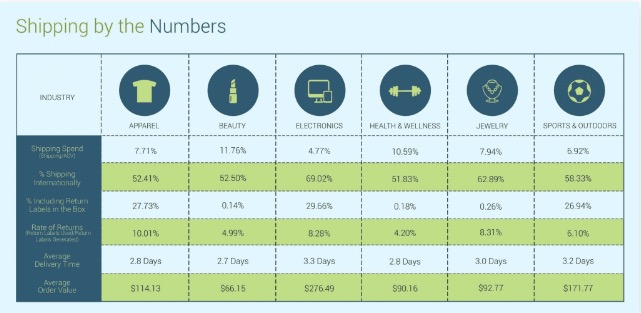
As shown, clothing is the most frequently returned item from e-commerce stores. You're probably wondering why, and we'll get to that now.
1. Accidentally purchased the wrong version
Sizing clothing can be frustrating because not every supplier follows the same size guide. The shirt is a large size from one supplier and could be a medium size elsewhere.
Amazon reported that 34% of its returns were due to wrong size, color, or fit. This is a common problem with clothing.
Suppliers often have size charts, but it may be best to check them yourself and see how well they fit your size.
With your knowledge, you can help your customers ensure they get the right size more often!
2. Damaged or defective product
Receiving a product that is damaged in some way is the biggest reason why someone would want to return it. 80.2% of product returns occur due to product damage or breakage.
It makes a lot of sense, considering they didn't take it the way they were supposed to.
Fortunately, many suppliers will return or send a new product if it is damaged. Not all suppliers have the same refund policy, so check it before assuming anything!
3. The product does not match your store description
Another common problem is when a product isn't what it looks or does what it should based on your product description.
This is a standard error when copying multiple designs with other product types. An example of this would be an art print design but a canvas design in the description.
It is necessary to constantly check whether the description is accurate to what the product is like in real life.
4. Taking too long for the product to arrive
Every print on demand store owner has a story about shipping taking a long time to arrive and the customer worrying about whether or not they will get their order.
Often times, it feels like it's out of your hands, and you're at the mercy of your shipping provider to arrive on time, especially when you're shipping from another country.
A survey conducted by Convey found87% expect brands to make adjustments when they miss a delivery date. This means that even though you haven't done anything wrong, you are still in trouble, so be aware!
5. Buyer's remorse
Buyer's remorse occurs when someone starts to regret their purchase after some time.
There are multiple reasons why this happens. Maybe they found another design that looked better. Maybe they made an expensive or impulsive purchase and now realize they don't need it.
A store owner can reduce buyer's remorse with a great customer experience, returns policies, and education about what they are getting.
Now that I've covered the top reasons why people might return your product, let's take a look at how to use it if you get it regardless of following the tips mentioned above.
How can you be proactive about returns?
Being proactive means taking the necessary steps that prevent these errors from occurring less frequently.
Let's take a look at the ways you can do this:
Shipping and returns policy
It is essential to have a shipping and returns policy. They are often found in the main menu, footer, and product description.

You don't want to hide it because it's one of the biggest reasons people will buy something from you.
More than 60% of visitors read the return policy before purchasing. So you're likely losing sales by not having one!
Be sure to answer any questions your customers may have about shipping and refunds. (For example, you can also explain shipping costs)
Use better quality products
You may be wondering how I make sure my products are of good quality .
You can test the products by shipping them to yourself! It is helpful to judge the quality among other suppliers to determine if the price is worth it.
Also think about other methods you can test in a real scenario. If it's a product you won't use or that you know your target market won't use, you know it will disappoint your customers and make them more vulnerable to return requests.
In short, sell quality that you know you can be proud of!
Use return costs in initial product pricing
Many e-commerce stores take into account the pricing of their products to include potential lost costs that can occur through shipping and returns.
If you're wondering why something is so much more expensive than it should be, the pricing strategy is usually to cover these extra costs.
So, if you're hurting with return costs, see if you can add more to the price of the product to help your business become more profitable.
Be clear in product descriptions
When you write your descriptions, remember to be as accurate as possible and double-check that the colours, sizes and materials are accurate.

When in doubt, order the product yourself and make the necessary decision based on what you find.
Depending on the photo or computer screen, things like color may not be as accurate as they are, for example.

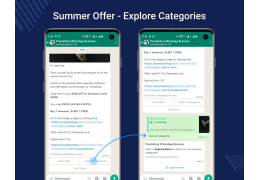


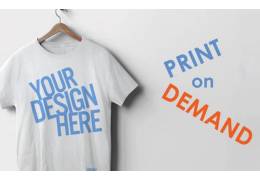

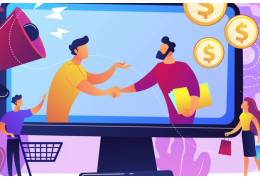
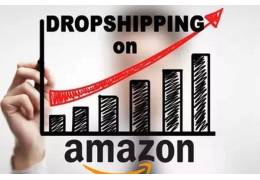

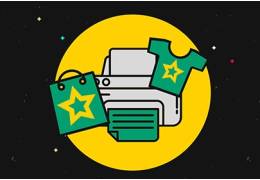



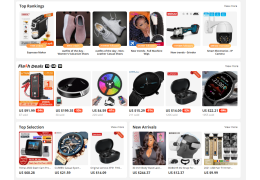

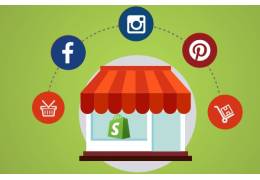

Leave a comment